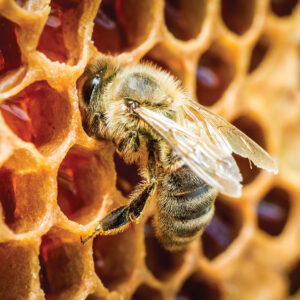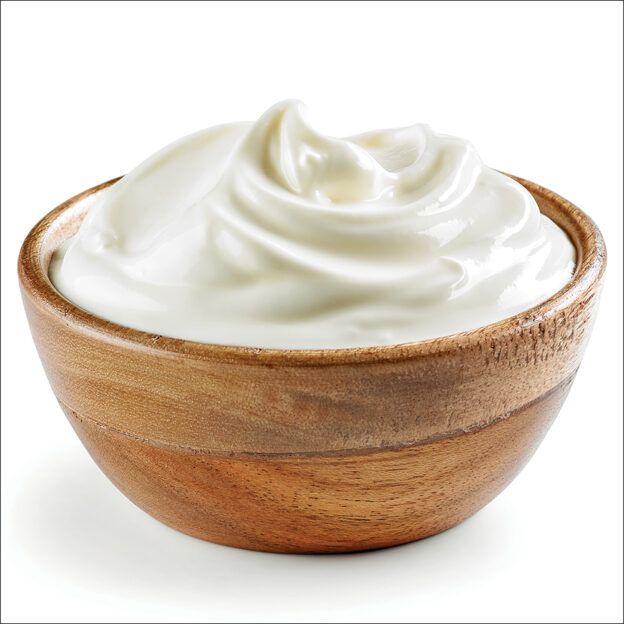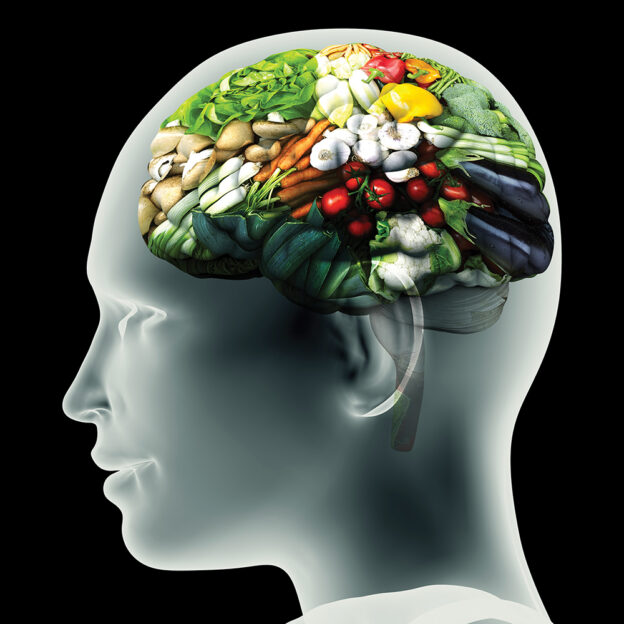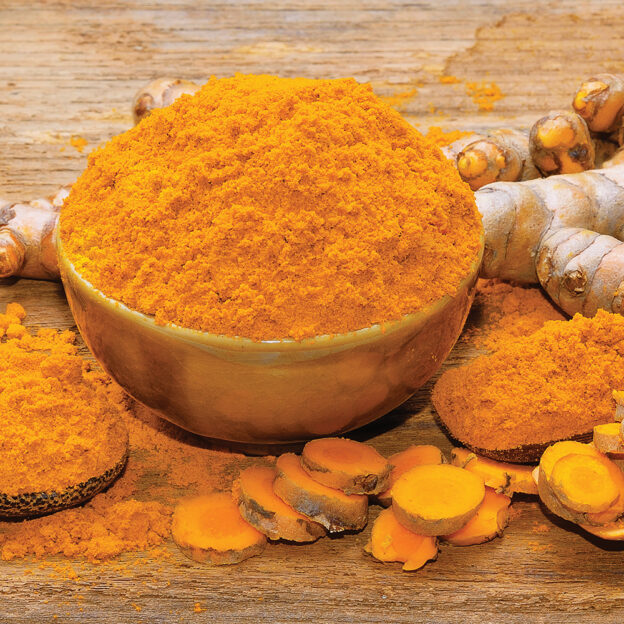Table of Contents
By Terry Lemerond

Honey isn’t the only healing substance honeybees are known for.
They also produce propolis—a brown, waxy resin made from leaf buds and tree sap flows mixed with the bee’s saliva, beeswax, and pollen.
Sometimes called “bee glue,” propolis is used by honeybees for a variety of functions, including to seal holes and cracks in the hive, maintain the hive’s internal temperature, and as an embalming substance to mummify invaders and prevent contamination of the hive. Effectively, it is the hive’s immune system—blocking all types of disease and infection-causing microorganisms that would be expected to thrive in a warm, high-humidity environment.
It is unsurprising that beehives are scientifically validated as among the cleanest environments in the natural world, all because of its powerful barrier that wipes out bacteria, fungi, and viruses.
Propolis comes from the Greek word “pro” meaning “for” and “polis” meaning “the city.” In short, “for the city” is exactly what it does.
Propolis has profound implications for humankind, as validated by science for decades. Researchers have identified more than 300 elements in propolis that exert a broad spectrum of biological properties, including antimicrobial, immunomodulatory, antioxidant, anti-inflammatory, antiallergic, dermato-protective, laxative, antidiabetic, and antitumor activity.1
Even though the leaf and tree sap sources for propolis may vary for honeybee colonies around the world, researchers find that colonies everywhere are protected by their impressive pathogen-fighting actions.
Viruses
With an increase in immune-related diseases, such as allergies, psoriasis, and Type I diabetes, research is now examining the role of propolis in potentiating the host defense system when the immune response is not sufficient to manage a specific infection or pathological condition.
In other words, it has been labeled an “immunomodulatory” substance, meaning it can enhance the immune response when needed.
A 2021 review showed that propolis is effective in suppressing the growth of the H1N1, H0N1, and H3N2 viruses as well as retroviruses, such as HIV.2 Another plus: it can help heal cold sores caused by a herpes simplex virus.3
In a study published in the journal Biomedicine Pharmacotherapy, a consortium of Brazilian and US researchers concluded, “Propolis has also shown promise as an aid in the treatment of various of the comorbidities that are particularly dangerous in COVID-19 patients, including respiratory diseases, hypertension, diabetes, and cancer. Given the current emergency caused by the COVID-19 pandemic and limited therapeutic options, propolis is presented as a promising and relevant therapeutic option that is safe, easy to administer orally, and is readily available as a natural supplement and functional food.”4
Bacteria
Much like propolis can help keep the beehive safe from bacterial infections, it has applications in preventing and treating bacterial infections in humans as well. This protection ranges from a simple infected cut to serious food poisoning caused by the E. coli bacteria, and potentially life-threatening infections linked to Staphylococcus aureus (MRSA) bacteria. Researchers have credited propolis with “broad spectrum” antibiotic properties that may even enhance the safety of conventional antibiotics.5
The polyphenol compounds called flavonoids are largely responsible for many of the protection the propolis provides. In some cases, the flavonoids simply enhance the immune system, in other cases, they act directly on the bacteria causing the infection. Among the flavonoids, artepillin C has been found to kill the staph bacteria that causes potentially fatal infections.6
Another extract of propolis called kaempferide is confirmed against Staphylococcus Saprophyticus, Enterococcus Faecalis, and Listeria monocytogenes—gram-positive bacteria responsible for urinary tract and abdominal infections, meningitis, cellulitis, encephalitis, vaginal infections, and more.7 Of note, many of these bacteria are notoriously antibiotic resistant.
Combination Infections
Ear infections (otitis media) are a common childhood malady that can be caused by a virus, bacteria, or both. Statistics show five out of six children have had at least one ear infection by the time they are three years old. It’s not surprising that ear infections are the number one reason children are brought to the doctor.
Ear infections stem from an obstruction of the eustachian tube—the canal that connects the middle ear with the throat and equalizes the pressure between the outer and middle ear. When that canal gets blocked as a result of a pathogen or even an allergy, fluid backs up into the ear.
Childhood ear infections are becoming more and more difficult to treat in an era of increasing antibiotic resistance but propolis may provide a solution. Clinical studies have shown that it can reduce the duration and severity of ear infection, reduce the need for antibiotics, and prevent recurring infections. By activating the immune and natural defense systems, propolis offers safe treatment and prevention without the use of medications that can have serious side effects.
Fungi
The Candida yeast family, especially Candida albicans (a fungus), is often the cause of a great deal of discomfort in the gut, mouth, and genitourinary (genital and urinary) organs. This may in part be because the overuse of antibiotics paves the way for yeast overgrowth in various parts of the body, primarily in the gastrointestinal tract.
Ongoing research confirms that propolis is effective against a broad variety of Candida infections, including those resistant to pharmaceutical drug treatment. Brazilian research has found it is especially effective against thrush—a common yeast infection of the mouth, often affecting adults with dentures. Another Brazilian study showed it is an effective treatment for vulvovaginal candidiasis—a common infection of the lower female reproductive tract caused mostly by the opportunistic fungus Candida albicans.8
Parasites
Research from Iran and India confirms that propolis is an effective treatment for various parasitic diseases, including malaria, trichomoniasis (sexually transmitted), toxoplasmosis (from cat feces or contaminated meat), Chagas disease, and leishmaniasis (tropical infections transmitted by insects).9 10
According to a 2021 review published in Biology, propolis stands out as a promising treatment for infectious diseases that lack adequate therapies due to the resistance of pathogens to drugs. “Propolis presents a great spectrum of components that could be used to treat characteristic features of distinct diseases. Not all propolis present the same activities; depending on the flora of the geographical area, each propolis has a different chemical composition with unique biological activities, making propolis a promising source of discovering molecules, which can be used in different clinical situations.”11
This is further confirmation that it offers a safe, effective, and far-reaching solution to a broad range of infectious diseases.
Cancer
One of the most impressive reviews of the research on propolis and cancer comes from a group of scientists at Chulalongkorn University in Bangkok, Thailand, who demonstrated a range of propolis’ anticancer effects:
- Neutralizing free radical damage
- Stopping out-of-control cell lifespans
- Optimizing immune system response
- Stopping cells from metastasizing throughout the body, usually through the bloodstream
Additionally, recent research found that it induces apoptosis—validating its effectiveness against several types of cancer, including breast, prostate, colon, pancreatic, brain, and oral cancers, leukemia, and melanoma. Propolis re-establishes communication between cells— effectively restoring the cells’ lifespan and inhibiting tumor growth.
A 2021 study published in Nutrients found that propolis is a rich source of biologically active compounds that may inhibit proliferation, angiogenesis, and metastasis of cancer cells. Authors wrote, “Propolis is one of the most interesting substances produced by honeybees. Its antibacterial, antifungal, and immunomodulatory properties have been known since antiquity. It also has an anti-cancer effect. Through [various signaling] pathways, propolis can induce apoptosis, cell cycle arrest, and reduce proliferation, viability, invasion, migration, and chemoresistance of cancer cells.”12
All living beings require nutrients in some form to survive. Cancer cells and cancerous tumors are no different. Angiogenesis is the process of growing a blood vessel network to nourish a cancerous tumor and allowing it to thrive and grow.
It stands to reason that cutting off that blood supply and oxygen, thus eliminating nutrients, will stop a cancerous tumor from growing and spreading. Numerous studies show that propolis, and especially CAPE, sparks angiogenesis by helping shrink the tumor-feeding network of blood vessels.
In addition to CAPE, other ingredients of propolis such as artepillin C, galangin, kaempferol, and quercetin showed an ability to stop angiogenesis and starve tumors.
CAPE (caffeic acid phenethyl ester) is one of the most powerful polyphenols present in abundance in propolis. It kills rogue cells and regulates inflammation—both major factors in most types of cancer. It also boosts apoptosis. In the simplest terms, this means that it tells the immune system to control abnormal cell growth.
Wound & Burn Healing
Propolis has been confirmed to boost collagen production, helping grow new skin cells to replace damaged ones. “Propolis, which is well tolerated with rare incidents of allergy and no toxicity, is referred to as an excellent candidate for burn management, enhancing skin cell proliferation, activation, and growth capacity,” wrote Italian researchers in the journal Burns and Trauma. Notably, the authors suggest that its wound-healing effects may be especially important for people with diabetes, who often experience slow wound healing.
Tooth Decay
A much-overlooked benefit of propolis is in various bio-dental applications. According to a 2017 study published in the Journal of Dental Research Dental Clinics, Dental Prospects, propolis extract has cariostatic effects, and limits plaque formation on the tooth surface, ultimately reducing dental caries. “…Brazilian propolis possesses significant antimicrobial effects against Steptococcus mutans in the oral cavity by inhibiting the enzyme activity and cell division…Further, it could be used as an alternative and natural therapy against the infectious condition of the oral cavity with no reported side effects.13
A Brief History of Propolis
The medicinal properties of propolis have been used for millennia—from oral care mummification:
- Propolis was carried into war by Roman soldiers as early as 100 BC for its wound-healing properties.
- In 1600, propolis was listed as an official drug in the London Pharmacopeias.
- Russian soldiers carried propolis, sometimes called “Russian penicillin,” into the battlefields of World Wars I and II.
- Ancient Jews referred to propolis as “Tzori” and used it as medicine. The therapeutic properties of Tzori are mentioned throughout the Old Testament.
- Greeks used it as the primary ingredient of polyanthus—a perfume that combined propolis with aromatic herbs and essential oils. (14)
- Hippocrates is thought to have turned to propolis to treat wounds and ulcers, both external and internal. (15)
- Pedanios Dioscorides, “the father of pharmacognosy” who lived around 50 AD, recorded medical uses of propolis in De materia Medica.
- DDioscorides wrote, “The yellow bee glue that is of a sweet scent…is soft and easy to spread after the fashion of mastic. It is extremely warm and attractive and is good for the drawing out of thorns and splinters. And being suffimigated it doth help old coughs and being applied it doth take away the lichens.” (16)
- Literature from the twelfth century mentions medicinal preparations containing bee glue in the treatment of both oral and pharyngeal infections, and dental caries. (17)
Propolis has been proven safer than antiviral pharmaceutical drugs, even in pregnant women and those with diabetes. It has also been shown to protect the heart, lungs, liver, and kidneys, among other organs.
Propolis is commercially available in the form of topical creams, lozenges, mouth rinses, and toothpastes. Plus, it has a variety of therapeutic advantages—from safety and cost-effectiveness to limited allergic reactions and biocompatibility with the human cell.
—
Terry Lemerond is a natural health expert with over 50 years of experience helping people live healthier, happier lives. Terry shares his nutrition and health knowledge through his newsletters, podcasts, webinars, radio program, and his website TerryTalksNutrition.com
Well Being Journal adapted the above passage by permission from Propolis: Nature’s Most Powerful Infection Fighter, copyright 2021 by Terry Talks Nutrition Books, Green Bay, WI.
References available at the following website address:





